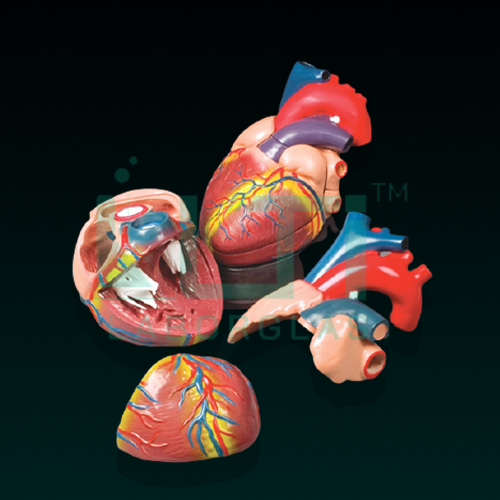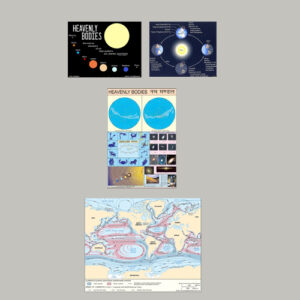Here are some common uses of heart models:
- Anatomy Education:
- Medical and Nursing Schools: Heart models are used to teach medical and nursing students about the anatomy of the heart, including the chambers, valves, blood vessels, and associated structures.
- Anatomy Classes: In general biology or anatomy classes, heart models help students understand the structure and function of the heart as part of the circulatory system.
- Physiology Instruction:
- Understanding Blood Flow: Heart models aid in explaining the physiological processes involved in blood circulation, including the flow of oxygenated and deoxygenated blood through the heart and the major blood vessels.
- Valve Function: Models often include movable parts that demonstrate the opening and closing of heart valves during the cardiac cycle.
- Cardiac Pathology Education:
- Disease and Disorders: Heart models may be used to illustrate various cardiac conditions and disorders, such as coronary artery disease, heart failure, and valvular diseases. This helps students and healthcare professionals understand the impact of pathology on heart structure and function.
- Patient Education:
- Healthcare Settings: Heart models can be used in healthcare settings to educate patients about heart conditions, treatment options, and surgical procedures.
- Cardiac Rehabilitation Programs: Patients recovering from heart-related conditions may benefit from visual aids like heart models to understand the importance of lifestyle changes and medical interventions.
- Cardiopulmonary Resuscitation (CPR) Training:
- Basic Life Support (BLS) Training: Heart models may be used in CPR training courses to demonstrate the correct hand placement and technique for chest compressions.
- Medical Device Demonstrations:
- Introduction to Cardiac Devices: Heart models may be used to explain the placement and function of medical devices such as pacemakers and defibrillators.





